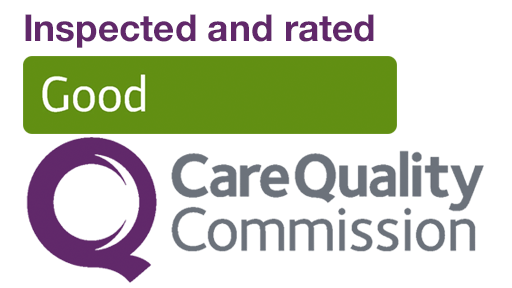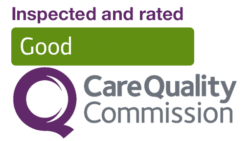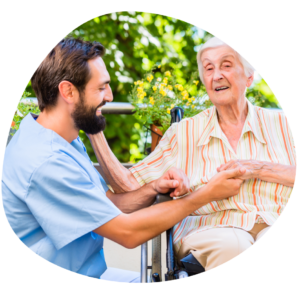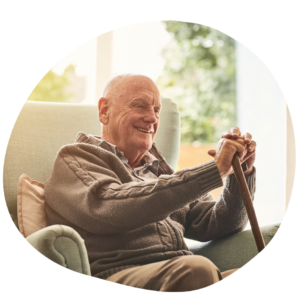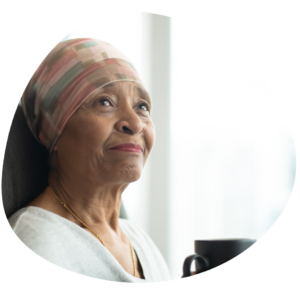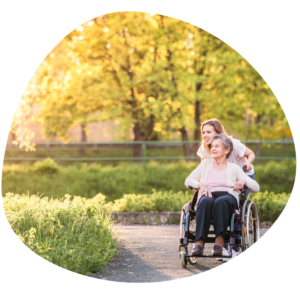
Essential Tips for Home Safety
How to Create a Safe Environment for Seniors
As our loved ones age, creating a safe and comfortable home environment becomes more important than ever. Many seniors wish to remain in their homes, but everyday risks like falls, burns, or medication mishaps can threaten their safety. By making a few thoughtful adjustments, you can ensure their home is a place where they can continue to live happily and independently.
This guide covers essential tips for improving home safety for seniors, addressing areas like fall prevention, fire safety, mobility aids, and more. Whether you’re planning for your loved ones or your future, these tips will help make any home safer and more senior-friendly.
Why Home Safety is Crucial for Seniors
Aging brings changes in mobility, vision, balance, and memory. These changes can make seemingly simple tasks more challenging and increase the risk of accidents. According to the World Health Organization, falls are the second leading cause of unintentional injury-related deaths worldwide, with older adults being the most affected group.
Creating a safe home environment can:
- Reduce Accidents: Minimize hazards that lead to falls, slips, or burns.
- Promote Independence: Seniors can perform daily activities more easily and confidently.
- Provide Peace of Mind: Families can feel reassured knowing their loved ones are living safely.
UK At-Home Care
If you are in Bolton, Wigan, or Bury, we can help your loved one thrive with our at-home care services.
Contact a Right Care Team MemberFall Prevention: The Top Priority
Falls are the most common home-related accidents among seniors, often leading to injuries like broken bones or head trauma. Taking steps to prevent falls can significantly improve safety.
1. Eliminate Trip Hazards
- Remove loose rugs, clutter, and cords from walkways.
- Repair uneven flooring or secure area rugs with non-slip backing.
- Keep frequently used items within easy reach to avoid unnecessary climbing or bending.
2. Improve Lighting
- Install bright, energy-efficient lighting in all rooms and hallways.
- Use nightlights in bedrooms, bathrooms, and hallways to ensure visibility at night.
- Place light switches at accessible heights, and consider motion-sensor lights for convenience.
3. Add Grab Bars and Handrails
- Install grab bars in bathrooms, near toilets, and in the shower or tub.
- Ensure staircases have sturdy handrails on both sides.
- Place handrails along long hallways if needed.
4. Use Non-Slip Mats
- Place non-slip mats or adhesive strips in the shower, bathtub, and kitchen.
- Avoid using loose mats in entryways or kitchens that can slide.
5. Consider Mobility Aids
- Provide a walker or cane for added stability.
- Install ramps or stairlifts if mobility is significantly limited.
Bathroom Safety: Reducing Common Risks
The bathroom can be one of the most dangerous rooms in the house for seniors due to slippery surfaces and tight spaces. Taking precautions can prevent falls and other injuries.
1. Install a Walk-In Tub or Shower
- Walk-in tubs or showers with low thresholds reduce the need to step over high edges, minimizing fall risks.
- Use a shower chair for extra support.
2. Add Grab Bars
- Secure grab bars next to the toilet and inside the shower or tub to help with balance and mobility.
3. Use Temperature Controls
- Set the water heater to a safe temperature (below 120°F or 49°C) to prevent burns.
- Install anti-scald devices on faucets and showerheads.
4. Keep Essentials Accessible
- Use easy-to-reach shelves for toiletries and towels.
- Avoid placing items in high cabinets that require stretching or climbing.
5. Ensure Proper Ventilation
- Use an exhaust fan to prevent slippery floors caused by condensation.
- Keep the bathroom well-lit to avoid accidents.
Kitchen Safety: Avoiding Fires and Burns
The kitchen is another high-risk area, especially for seniors who enjoy cooking. Proper precautions can help prevent fires, burns, and other hazards.
1. Install Fire Safety Features
- Place a smoke detector near the kitchen and check it regularly.
- Keep a fire extinguisher within easy reach and teach your loved one how to use it.
2. Simplify Cooking
- Use appliances with automatic shut-off features, such as kettles or stoves.
- Clearly label knobs and buttons on ovens, microwaves, and stoves.
3. Organize Storage
- Place frequently used items at waist level to avoid bending or climbing.
- Use pull-out drawers or lazy Susans for easy access.
4. Reduce Clutter
- Keep countertops clear of unnecessary items to avoid confusion or accidents.
- Ensure cords from small appliances like toasters or kettles are tucked away.
5. Upgrade Lighting
- Use under-cabinet lighting to brighten workspaces.
- Ensure the kitchen is evenly lit to avoid shadows or dark corners.
Bedroom Safety: Creating a Comfortable Space
The bedroom should be a relaxing and hazard-free environment. Small adjustments can make it safer and easier to navigate.
1. Choose a Comfortable Bed Height
- The bed should be at a height where your loved one can sit with their feet flat on the floor.
- Use bed rails for added safety if necessary.
2. Keep Essentials Within Reach
- Place a phone, water, glasses, and medications on a bedside table.
- Use a cordless phone or emergency alert system for easy access.
3. Add Non-Slip Flooring
- Replace slippery rugs with non-slip mats or carpeting.
- Avoid high-pile rugs that could catch on walking aids.
4. Improve Lighting
- Use touch-sensitive or remote-controlled lamps for convenience.
- Install a light switch near the bed.
5. Prevent Overheating
- Use lightweight bedding to prevent overheating.
- Keep a fan or air conditioner accessible during warmer months.
Fire Safety: Protecting Against Common Hazards
Fire safety is critical in any home, especially for seniors who may have slower reaction times. Simple precautions can significantly reduce the risk of fires.
1. Install Smoke and Carbon Monoxide Detectors
- Place detectors in every bedroom, living area, and hallway.
- Test alarms monthly and replace batteries as needed.
2. Use Safe Heating Methods
- Keep portable heaters away from flammable objects like curtains or bedding.
- Use heaters with automatic shut-off features.
3. Avoid Open Flames
- Use battery-operated candles instead of traditional ones.
- Supervise the use of fireplaces or stoves.
4. Practice Electrical Safety
- Avoid overloading outlets or using frayed cords.
- Replace old appliances with energy-efficient models.
5. Create an Emergency Plan
- Develop a clear evacuation plan and practice it regularly.
- Ensure emergency numbers are easy to find.
Medication Safety: Preventing Mistakes
Managing medications is a common challenge for seniors. Accidental overdoses or missed doses can have serious consequences. Organizing medications can help avoid confusion.
1. Use a Pill Organizer
- Organize medications into a daily pill organizer to simplify dosages.
- Choose a model with clear labels for morning, afternoon, and evening doses.
2. Set Reminders
- Use alarms, smartphone apps, or caregiver reminders to ensure medications are taken on time.
3. Review Medications Regularly
- Schedule regular reviews with a doctor or pharmacist to manage prescriptions and prevent adverse interactions.
4. Store Medications Safely
- Keep medications in a cool, dry place out of reach of children or pets.
- Avoid mixing old and new prescriptions in the same bottle.
5. Monitor Side Effects
- Watch for changes in behavior, mood, or health that may indicate side effects or incorrect dosages.
General Home Safety Tips
In addition to room-specific adjustments, consider these general tips to improve overall safety in the home:
1. Install Emergency Alert Systems
- Use wearable devices like medical alert buttons or emergency pendants.
- Set up a monitored home security system for added peace of mind.
2. Declutter Walkways
- Ensure all hallways and walkways are free of furniture or obstacles.
- Keep frequently used paths well-lit and unobstructed.
3. Secure Doors and Windows
- Install locks that are easy to use but secure.
- Use security bars or alarms if necessary.
4. Maintain Appliances
- Regularly check appliances for wear and tear.
- Schedule professional maintenance for heating, cooling, and electrical systems.
5. Encourage Regular Exercise
- Promote light exercise to maintain strength and balance, which can reduce the risk of falls.
How Right Care Can Help
At Right Care, we understand the importance of creating a safe home environment for seniors. Our professional caregivers are trained to identify potential hazards, provide assistance with daily tasks, and ensure your loved one remains comfortable and secure in their home.
Our Services Include:
- Personalized in-home care plans tailored to individual needs.
- Assistance with mobility, personal care, and daily activities.
- Home safety assessments to identify and address potential risks.
- Companionship and emotional support to promote mental well-being.
At Right Care, we’re here to guide you every step of the way. Whether it’s in-home assistance, companionship, or specialized care, we’re committed to providing exceptional service that gives you and your family peace of mind.
Home safety is essential for seniors who want to maintain their independence and enjoy a high quality of life. By addressing common risks in each room and implementing these safety tips, you can create a home that’s not only secure but also comfortable and welcoming.
Taking the time to make these adjustments

